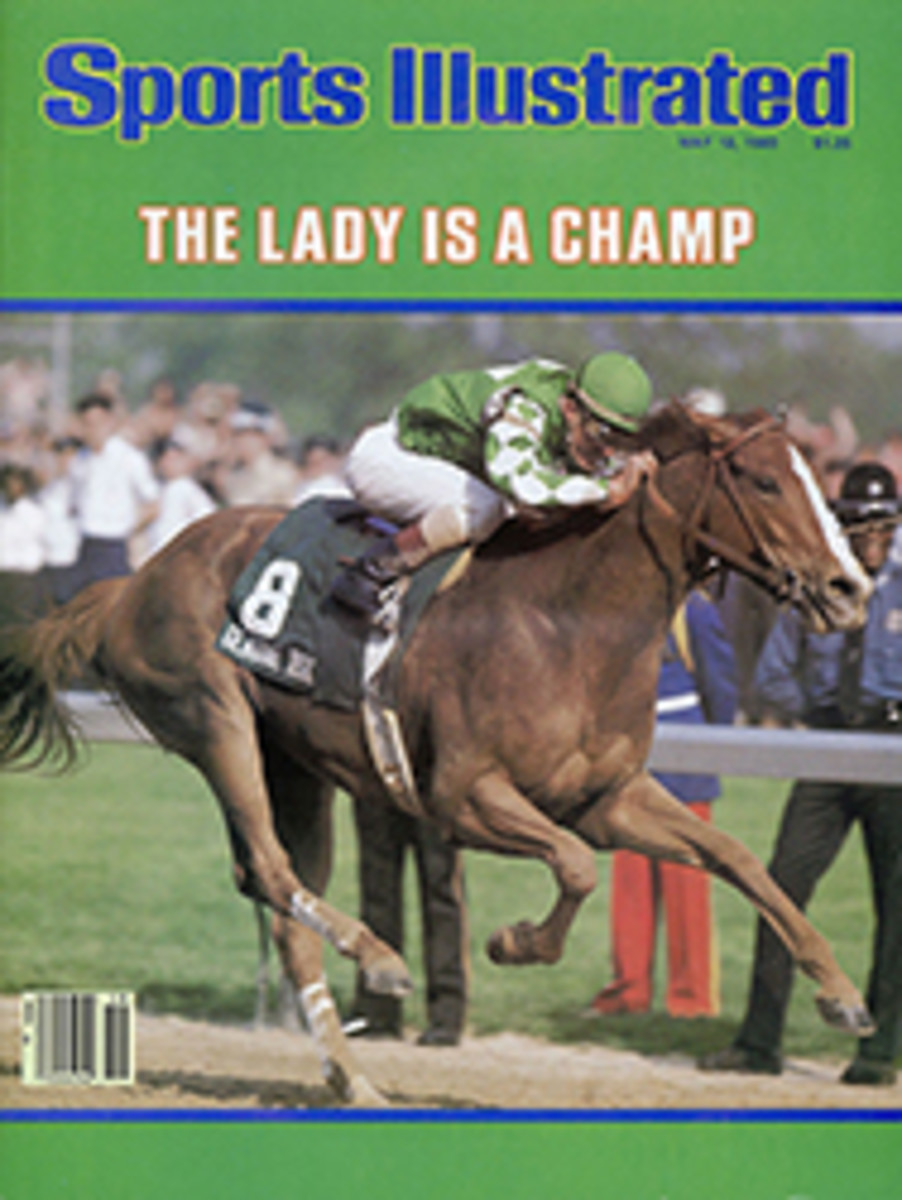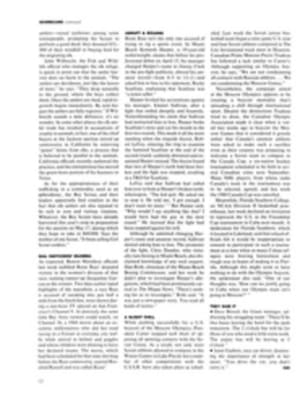
THE WRONG MAN BEHIND THE MIKE
At the beginning of his novel Hawaii, James A. Michener goes on for 13½ pages about the creation of the islands—volcanic eruptions, lichens borne by the winds, layers of coral—and I waded through the geography lesson knowing that eventually something more interesting than a sea-soaked coconut would wash ashore. In Iberia, he spends about 15 pages on the treasures of a Gothic cathedral in Toledo, and I stayed with him every syllable and El Greco of the way. But this Michenerphile couldn't finish Sports in America, a two-pound, 466-page tome published in 1976. At $12.50 it was either an expensive doorstop or a cheap cure for insomnia.
Now portions of Sports in America have been turned into a three-part miniseries for the Public Broadcasting Service: "The Black Athlete," which was shown March 17; "Women in Sports," shown April 21; and "Children in Sports," which will be aired May 19.
Michener is the narrator. He is dull and plodding, despite Writer/Producer/Director Bud Greenspan's efforts to brighten things by having him speak from such sporting venues as a boxing ring and the floor of the Los Angeles Coliseum. Michener the writer has brought ancient civilizations to life in his books, but Michener the talker could make a World Series triple play seem boring.
There is nothing wrong with a low-key approach if it fits the subject matter and the narrator has the easygoing on-camera charm of a Charles Kuralt or a Dick Cavett. But Sports in America purports to examine important issues seriously. While a Mike Wallace-style inquisitor might not have been in order, a narrator who at least brought some vigor to his presentation would've helped. With Michener failing to lend any sense of urgency to Sports in America, the series is left with only a few of the interviews with oldtime athletes and the rare film footage and still photographs dug up by Greenspan to recommend it.
"The Black Athlete" starts powerfully, with a contradictory, condescending and racist 1935 prefight introduction in Yankee Stadium. Ring Announcer Joe Humphries presents recently dethroned heavyweight champ Max Baer and then turns to the reigning titleholder in the other corner: "His worthy opponent, the new sensational pugilistic product—although colored, he stands out in the same class with Jack Johnson and Sam Langford—the idol of his people, none other than Joe Louis!"
That snippet of film has more bite than anything else in the segment, with the possible exception of Fred (Fritz) Pollard, an All-America halfback at Brown in 1916, telling how the Harvard and Yale players used to serenade him with Bye Bye Blackbird. And how, as a pro, on occasion he had to change his clothes in a cigar store because he wasn't allowed in the locker room.
Michener's message is that, while it's O.K. for black kids to dream of becoming the next Earl Campbell or Reggie Jackson, they had better pay attention to their classroom work, too. This is best illustrated by the case of Bill (The Hill) McGill, who made All-America at the University of Utah and was the NBA's first draft choice in 1962, but didn't succeed as a pro; later on he couldn't even succeed as a janitor. McGill's case, so similar to what is still happening almost 20 years later to highly recruited athletes all over the country, deserved more time and more hard questions—such as, how could McGill have gone to college for four years and still come out unprepared to get or hold an off-court job?
"The Black Athlete" gives us little more than blips: short film clip, short interview, short film clip, short interview. The "Women in Sports" and the upcoming "Children in Sports" segments have the same rhythm. Interesting footage of women's archery and swimming at the 1912 Stockholm Games; Aileen Riggin diving at the 1920 Antwerp Games; Elizabeth Robinson sprinting in the Amsterdam Olympics of 1928; a photo of Babe Didrikson in football gear, about to throw a pass. And interspersed: quickie Michener interviews on women's struggles for recognition, scholarships and fair access to facilities. In one of them, Micki King-Hogue tells of having to sneak into the University of Michigan's men's pool to practice her dives.
In "Children in Sports" more than 25 interviews are crammed into the hour. Perhaps the most arresting moment occurs when Michener, 73, tells Jockey Steve Cauthen in a conversation that took place in 1979, "You know, I never wrote a word till I was 40 years old. and here you're al the lop of your world reputation at 16. It shows how human beings can develop so differently."
"Women in Sports" suffers from an obvious omission. There is no interview with Billie Jean King, the prime figure in the advancement of women's tennis and probably the foremost spokeswoman for female athletes in general. Instead, Michener interviews Chris Evert Lloyd, a great champion but no pioneer. It seems that Greenspan's staff couldn't get by Billie Jean's staff to set up a King-Michener filming. That alone shows that women's sports have come a long way.
Michener's sermonette at the end of "Women in Sports" is this: "There are very few Babe Didriksons and Kathy Switzers, but then, too, there are very few Bruce Jenners or O.J. Simpsons. Women today must realize, like men, that sport and competition are the road to a healthier, happier life...that for women, the goals should not necessarily be to win, but to enjoy the benefits of participating in sport, both physically and emotionally.
"I'm James Michener."
And I'm waiting for Michener to put down the mike and write another novel.
PHOTO
POLLARD TOLD MICHENER OF RACISM IN THE IVIES AND THE PROS

